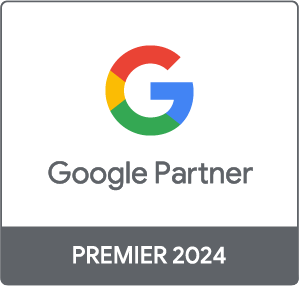SEO Web Design for Escape Rooms: A Complete Guide to Higher Rankings and More Bookings

If you’re looking to boost your escape room’s visibility and bookings, SEO web design for escape room websites is the key!
You’ve got an amazing escape room with mind-blowing puzzles, but if your website isn’t pulling in customers, something’s missing.
If your site is slow, confusing, or buried in search results, people might leave before even thinking about booking a game.
That’s where SEO web design comes in!
A well-optimized website helps you rank higher on Google, makes it easy for visitors to find what they need, and—most importantly—turns more of them into paying customers.
Why Does SEO Web Design Matter?
Get Found on Google – The better your website is optimized, the easier it is for customers to discover you.
Create a Smooth Experience – A fast, easy-to-navigate site keeps visitors engaged and wanting more.
Boost Your Bookings – The easier it is for people to book, the more your business grows.
In this guide, I’ll walk you through everything you need to know to build a high-ranking, customer-friendly escape room website that drives more bookings and success. Let’s dive in!
What Is SEO Web Design?
SEO web design for escape rooms is all about making your website both user-friendly and search engine-friendly.
It’s the process of combining SEO best practices with your website’s design to help it rank higher on Google, attract more visitors, and drive more bookings.
Integrating SEO Best Practices Into Website Design
When we talk about SEO web design, we’re referring to combining search engine optimization techniques with the actual structure and layout of your site.
This means optimizing everything from your website's speed and mobile-friendliness to using the right keywords in your content. By doing this, you ensure that your site is easy for both users and search engines to navigate and understand.
For example, using proper header tags (H1, H2, H3) in your content helps search engines understand the structure of your pages.
Similarly, optimizing your images with alt tags and ensuring your site loads quickly can greatly boost your ranking. SEO web design takes all of these practices and integrates them into the very foundation of your website.
Why Escape Room Businesses Need SEO-Friendly Websites
Now, you may be wondering: Why should escape room businesses, specifically, focus on SEO web design? The answer is simple: More visibility leads to more customers!
Escape rooms are a competitive market, and if your website isn’t showing up in search results, you’re missing out on a ton of potential bookings.
Most customers don’t go past the first page of Google search results. If your website isn’t optimized to appear at the top of that page, you’re losing customers to competitors who rank higher.
Moreover, an SEO-friendly website makes it easier for people to find the specific services you're offering.
Whether it’s your escape room games, special event packages, or booking options, SEO ensures these key elements are front and center when someone searches for related terms like “escape room near me”, "escape room birthday party in [location]", or “best escape rooms in [location]”.
Google’s Emphasis on SEO-Friendly Web Design and Its Impact on Organic Rankings
Google’s algorithms are designed to prioritize websites that offer a positive user experience—and this includes sites that load quickly, are mobile-friendly, and provide relevant, well-structured content.
In fact, Google has made it clear that these factors are crucial for ranking higher in search results.
For escape room businesses, this means that SEO web design isn’t just about appearing on Google’s radar; it’s about showing up in the right way. Google rewards websites that load fast, offer easy navigation, and feature high-quality content.
In turn, this boosts your organic rankings, ensuring that potential customers find you first when they search for escape rooms in your area.
In short, SEO web design for escape rooms isn’t just important—it’s essential. It boosts your rankings, helps attract more visitors, and ultimately leads to more bookings.
Ready to learn how to implement SEO on your website? Let’s keep going!
Key Factors for an SEO-Friendly Escape Room Website
An SEO-friendly website boosts your search rankings and enhances user experience.
In this section, we'll cover key factors like mobile-first design, speed optimization, and local SEO to help your escape room website attract more visitors and drive conversions.
Mobile-First Design
In today’s digital landscape, Google prioritizes mobile-first indexing, which means Google ranks the mobile version of your website above the desktop version.
With more users browsing from mobile devices, it’s crucial that your website is mobile-friendly to ensure better user experience, engagement, and SEO rankings.
Best practices for mobile-friendly design include:
Responsive Design: This approach ensures your website automatically adjusts to any screen size, from mobile phones to desktops, offering a seamless experience across devices.
Dynamic Serving: This method serves different HTML content based on the user’s device, ensuring a customized experience that enhances load speed and relevance.
Separate URLs for Mobile and Desktop: In some cases, you may want to create distinct URLs for mobile and desktop versions of your site (m.website.com), though responsive design is generally preferred.
Mobile-Friendly Content Formatting: Ensure that font sizes are readable on smaller screens, paragraphs are concise, white space is used effectively, and pop-ups are minimized to avoid disrupting user experience.
To check if your site is mobile-compatible, use Google’s Mobile-Friendly Test tool, which will highlight areas that need improvement.
Website Speed Optimization
Speed is a critical factor for SEO and user experience. Google uses page speed as a ranking factor, and users are less likely to stay on a website that takes too long to load. Slow-loading sites lead to higher bounce rates, which can negatively impact conversions.
To optimize website speed, consider the following:
Optimizing Images: Large, uncompressed images can slow down your site. Use modern formats like WebP instead of PNG/JPEG, which provide high quality at smaller file sizes.
Reducing HTTP Requests: Every element (images, CSS, JavaScript) on your page requires an HTTP request. Simplify your website by reducing unnecessary elements, combining files, and using CSS sprites.
Enabling Browser Caching: By caching frequently accessed content in the user’s browser, you can significantly speed up load times on repeat visits.
Using a Content Delivery Network (CDN): CDNs distribute your site’s content across multiple servers worldwide, reducing the distance between the user and the server, resulting in faster load times.
For speed analysis, use tools like Google PageSpeed Insights, Lighthouse, and Semrush Site Audit to evaluate performance and identify areas for improvement.
Website Structure and Navigation
A well-organized website structure is essential for both search engines and users. It helps search engines crawl your site efficiently, and it ensures users can easily find the information they need.
Key practices include:
Logical Site Architecture: Your website should be organized in a clear, logical structure that makes sense to both search engines and users. This includes creating topic clusters and silo structures that group related pages together. For example, use a URL structure like Location > Games > Booking to make it easier for search engines to understand the relationship between different pages.
Internal Linking: Link relevant pages within your content to improve site navigation and distribute link equity across your site. Make sure you include navigation links in the menu, header, and footer for easy access.
Breadcrumb Navigation: Breadcrumbs allow users to easily track their navigation path on the site. It also provides search engines with additional context about your site’s structure.
By ensuring a solid site architecture and intuitive navigation, you improve both the user experience and SEO performance.
Indexability and Crawlability
For your website to appear in search results, Google must be able to crawl and index all of your pages. Indexability and crawlability refer to whether Google can access and understand the content on your site. Common issues include orphan pages (pages with no links pointing to them), duplicate content, and improper use of canonical tags.
To improve indexability and crawlability:
XML Sitemaps: Submit an XML sitemap to Google Search Console to help Google discover and crawl all your important pages.
Robots.txt: Properly configure your robots.txt file to control which pages search engines can crawl and index. Be careful not to block important pages accidentally.
Canonical Tags: If you have duplicate content (e.g., product pages or location-based pages), use canonical tags to indicate the preferred version to Google.
Properly setting up these elements ensures that your website is fully accessible to search engines, which helps improve your rankings.
On-Page SEO Elements
On-page SEO plays a significant role in determining how well your site ranks on search engines. It includes optimizing the content, images, and metadata on your pages.
Here’s how to optimize your on-page elements:
Meta Tags: Make sure your meta title and description are compelling and include relevant keywords like "escape room in [location]." Use appropriate H1-H6 headers to structure your content and improve readability.
Structured Data (Schema Markup): Adding schema markup to your site helps search engines understand your content better, especially for local SEO. For example, you can mark up your business name, address, phone number, and reviews.
Image Optimization: Use descriptive alt text and file names for images to help search engines understand the content. Also, compress images to reduce file sizes, which helps with page load speeds.
On-page SEO not only enhances your site’s rankings but also makes it more user-friendly and accessible.
User Experience (UX) and Page Design
A visually appealing and easy-to-navigate website improves user experience, keeps visitors engaged, and encourages conversions. Here are some best practices for UX and page design:
Above-the-Fold Content: Make sure important content is visible without the need for scrolling. This includes clear calls-to-action (CTAs) such as "Book Now" or "Find Your Game."
Clear CTAs: Your CTAs should stand out and guide users toward taking action, such as booking an escape room session.
Avoid Intrusive Pop-ups: While pop-ups can be useful, they can also be disruptive. Avoid them, especially those that cover the entire screen, as they frustrate users and negatively impact SEO.
Accessibility: Ensure that your site is accessible to all users, including those using screen readers or keyboard navigation. This improves both user experience and your SEO rankings.
By optimizing UX and page design, you ensure that users not only stay on your site longer but also return, improving your SEO performance over time.
Local SEO for Escape Room Websites
Local SEO is crucial for businesses that rely on local customers, such as escape rooms. It helps you show up in local search results when people are searching for escape rooms in your area.
To optimize for local SEO:
Google Business Profile: Claim and optimize your Google My Business listing. This will help your escape room appear in local search results and on Google Maps.
Embed Google Maps: Add a Google Map to your website to make it easier for customers to find your location.
Location-Based Keywords: Use specific location keywords like "escape rooms in [City]" throughout your website’s content to target local search traffic.
NAP Consistency: Ensure that your Name, Address, and Phone number (NAP) are consistent across all online platforms, including your website, social media, and business directories.
Implementing these local SEO strategies will increase your visibility in local searches, driving more potential customers to your escape room.
SEO and Web Design Synergy: How They Boost Your Business
When SEO and web design work together, they create a powerful force that can skyrocket your escape room business. A well-designed website that’s optimized for search engines not only ranks higher but also converts visitors into customers.
The Direct Impact of SEO-Friendly Design on Conversions
SEO-friendly design directly impacts your conversion rate by making it easier for potential customers to find your site, navigate it seamlessly, and book their next escape room experience.
When your website is fast, mobile-friendly, and optimized for search engines, customers are more likely to trust your business and complete a booking.
An intuitive design combined with strategic SEO elements like call-to-action buttons and fast load times keeps users engaged and encourages them to take action.
Real-World Examples of Escape Room Businesses with Successful SEO Web Design
Many escape room businesses have seen tremendous growth by adopting an SEO-friendly web design. For example, Escape Room X revamped their website to improve mobile responsiveness and page speed.
As a result, they saw a 40% increase in organic traffic and a 25% increase in bookings within the first three months. Similarly, Escape Room Y optimized their local SEO, updating their Google Business Profile and adding location-specific keywords.
This led to a 30% boost in local search visibility and a noticeable increase in walk-in bookings.
Case Study Insights: Improved Rankings, Higher Engagement, and Increased Bookings
One of our case studies highlights how an SEO web design overhaul helped a multi-location escape room business improve its rankings and engagement. By optimizing their website structure, improving page speed, and focusing on local SEO, their organic rankings improved dramatically.
As a result, they saw a 50% increase in website traffic and a 35% increase in online bookings within just six months.
In short, integrating SEO with web design isn’t just a technical task; it’s a proven strategy that drives real results. By focusing on both SEO and design, your escape room business can stand out in search results, engage visitors, and increase bookings.
In today’s competitive escape room industry, investing in SEO web design for escape room businesses is no longer optional—it’s essential. A well-optimized website that blends seamless design with effective SEO strategies not only helps your business rank higher on search engines but also converts visitors into loyal customers.
By focusing on key factors like mobile-first design, website speed, and local SEO, your escape room can create a stronger online presence, improve user engagement, and ultimately boost bookings.
If you're ready to see the difference that SEO web design for escape room can make, it’s time to start optimizing. The right design and SEO strategy can set your business apart, leading to increased visibility, higher engagement, and a greater number of bookings.
Let’s get started today!
Read More Articles Like This
Get Escape Room Growth Strategies,
An Offer You Can't Refuse.
We're the Escape Room Godfather, here to skyrocket your revenue and help you rule the market.


